Intro
Up until recently I was hosting this Hugo based site using the free web hosting that Github provides to repos. This free hosting is what they call Github Pages
While free is better that nothing, it definitely has its limitations. One being not supporting Hugo based static sites out-of-the-box (I will add more in the Reasons section)
That was not a big deal and with some work I got everything automatically and successfully built and deployed to GH Pages.
Then, since I was working on some CloudFlare stuff (ie: Zero Trust) for one of my side projects, I decided to give CloudFlare Pages a go at hosting my Hugo site, and in the end couldn’t be happier with the experience and results.

Reasons
Below are some of the reasons why I ditched GH Pages in favour of CF Pages for my Hugo site.
No native integration with Hugo
-
Github Pages have native integration for building Jekyll sites, but not Hugo.
This means that you don’t get auto-magic Hugo builds on every commit. You will have to build the site yourself using one of the following ways:
-
Option 1:
- Build locally on your terminal: ie.
hugo --minify - Commit the contents of the generated ./public folder to the gh-pages branch.
- Push the changes
- Build locally on your terminal: ie.
-
Option 2: <– My preferred, since that’s why CI/CD exists in this world!
- Create a Github Actions workflow to build and push the Hugo site to the gh-pages branch. For example:
-
|
|
NOTE: One annoying part here was that as soon as you have Github Pages enabled in your repo (ie: Settings -> Pages -> Source gh-pages branch) Github creates an “internal” workflow called pages-build-deployment that you as a user, cannot tweak in any way nor delete. That workflow alone does not know how to handle Hugo sites, so it is pretty useless, hence the need of our own workflow to deal with Hugo sites.
In CF pages you can pick from one of the multiple framework presets, including Hugo:
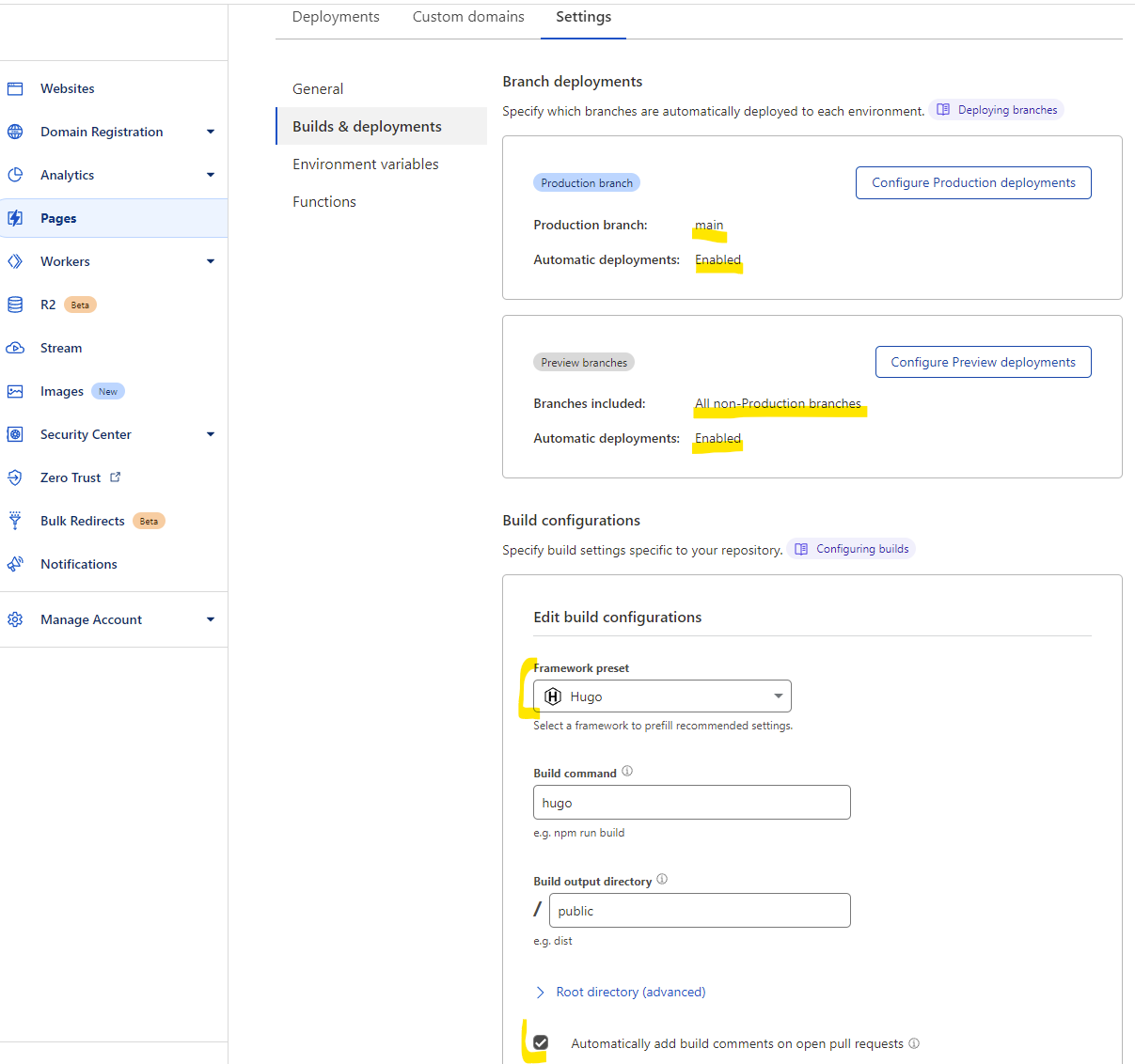
Simpler custom domain setup
-
Setting a custom apex domain for Github pages requires adding 4 DNS A records pointing to Github’s IP addresses (add another 4 AAAA if you are into IPv6) to your DNS providers. However, nobody guarantees those IPs will forever be the same…
-
Some Github documentation mentioned that a CNAME file gets automatically committed to your repo when you set your “Custom domain” in the Github Pages menu. That was not my case. So I had to create that CNAME file “myself” in the root of my
gh-pagesbranch. Luckilypeaceiris/actions-gh-pages@v3github action can take care of creating the file for you. -
Within Github Pages exists the concept of user pages, organization and project pages. Github allocates you the domain
<user>|<organization>.github.io. If you have a repo named like<user>|<organization>.github.ioin your account (which BTW, you can only have one as you are logged into just one account/organization), then Github would serve the repo at that domain. This is what they call user and organization pages. This is ok-ish… But I rather name my repo the way I want (ie. myproject) and not being forced to follow the<user>|<organization>.github.ioconvention. Github lets you do that too, name the repo the way you want, but then it won’t serve your repo pages at<user>|<organization>.github.iobut rather at<user>|<organization>.github.io/myproject. This is what they call project pages and your can have several of those under youruserororganization. Personally I think it would be better if project pages were automatically served from a subdomain ie:myproject.<user>|<organization>.github.ioas it would make things easier from a dns record management perspective, and would remove the need for adding CNAME files in your repos. -
The experience in CF Pages is much streamlined, couple of clicks and you are done. Specially if you also use CloudFlare as your DNS provider (I use Porkbun as my registrar but then use CloudFlare nameservers so I manage all my domain’s DNS records from the CloudFlare dashboard).
-
Redirecting
wwwsubdomain to your apex domain it’s also quite simple in CloudFlare.-
Add an A record with name
wwwpointing to192.0.2.1with Proxied status (orange cloud) -
Add an AAAA record with name
wwwpointing to100::with Proxied status (orange cloud) -
Add a redirect rule for
wwwto go to yourapex. There are at least 3 ways to do this in CF:Of the 3 methods above, I prefer the Bulk Redirect for the following reasons:
-
I can centrally manage redirects for various CloudFlare websites in just one place, instead of committing a
_redirectsfile in each of my repos. -
CF only allows 3 free Pages Rules per website. I prefer to use them for more interesting things (ie caching related stuff) rather than burn one rule just to do a simple redirect (Bulk Redirects were explicitly designed to do redirects so they have a much more generous allowance: 5 redirect lists with up to 20 items each, that you can use in up to 15 rules)
-
Bulk Redirects rules can be enriched using expressions to do cools things such redirecting based on Geolocation.

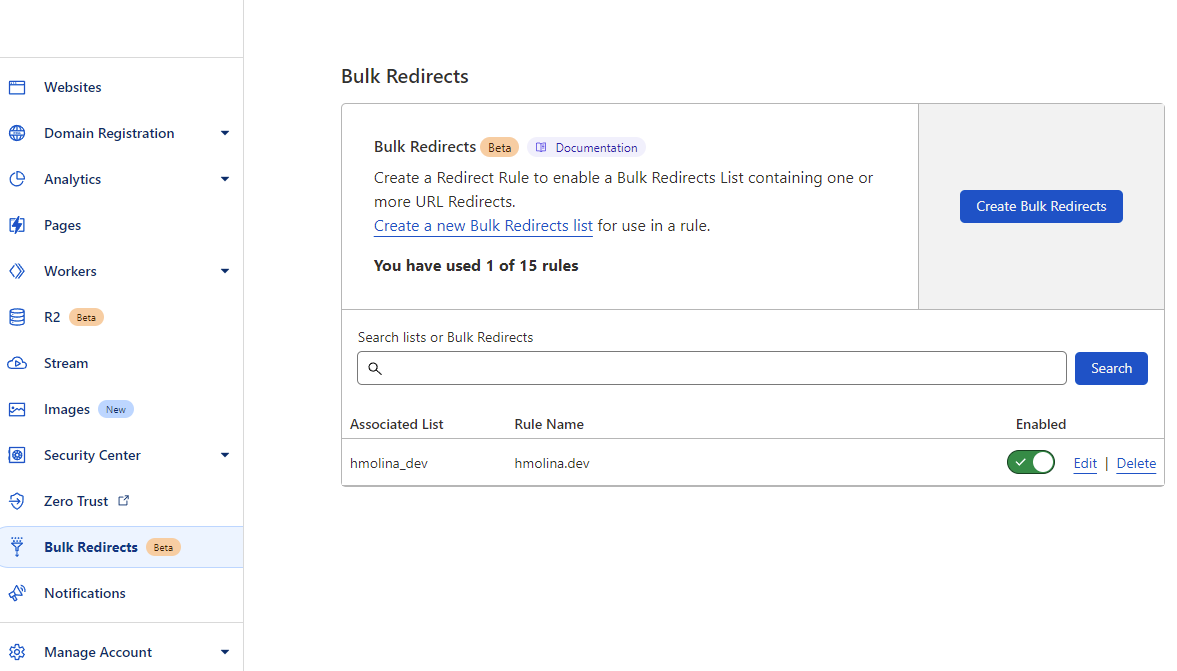
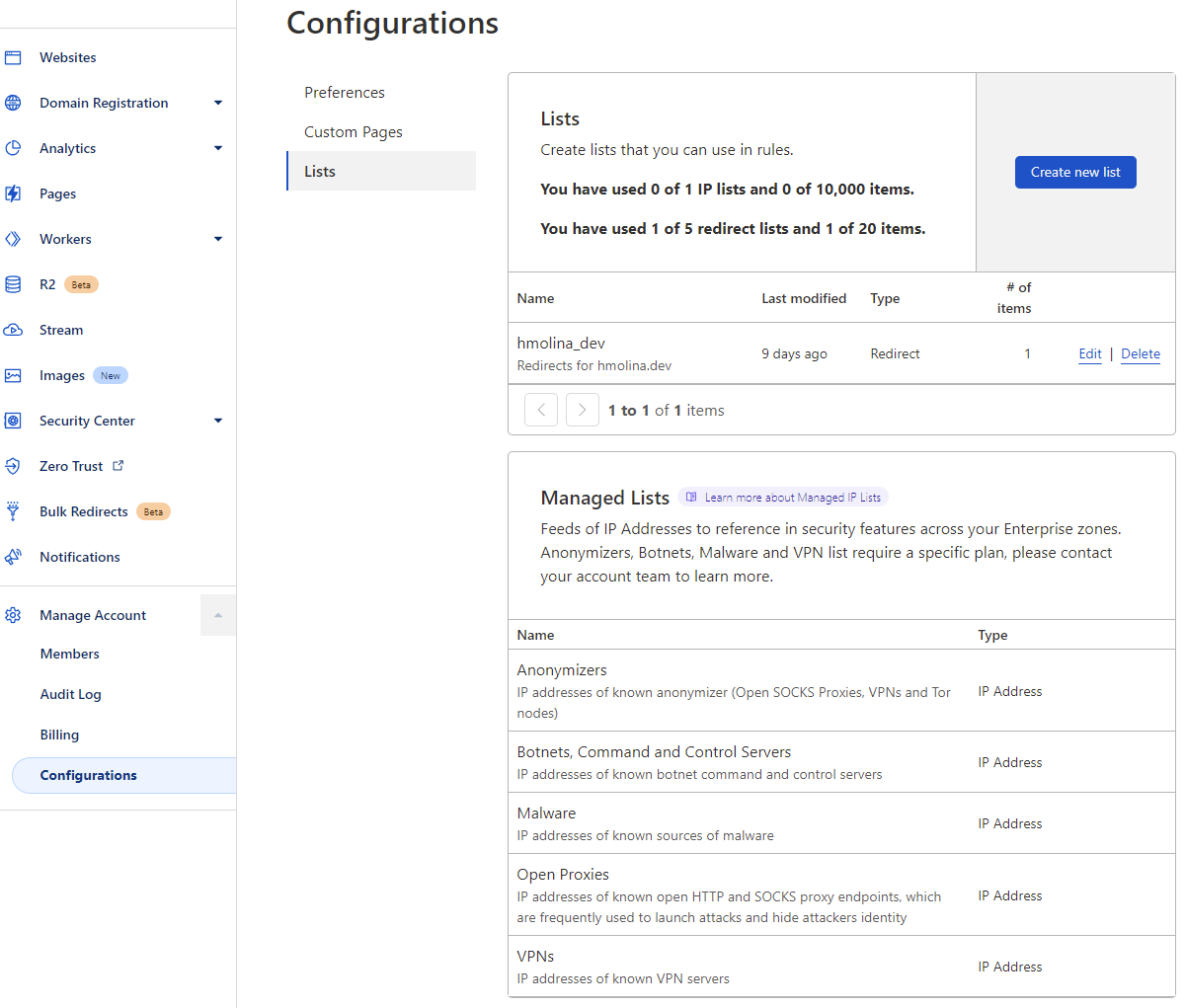
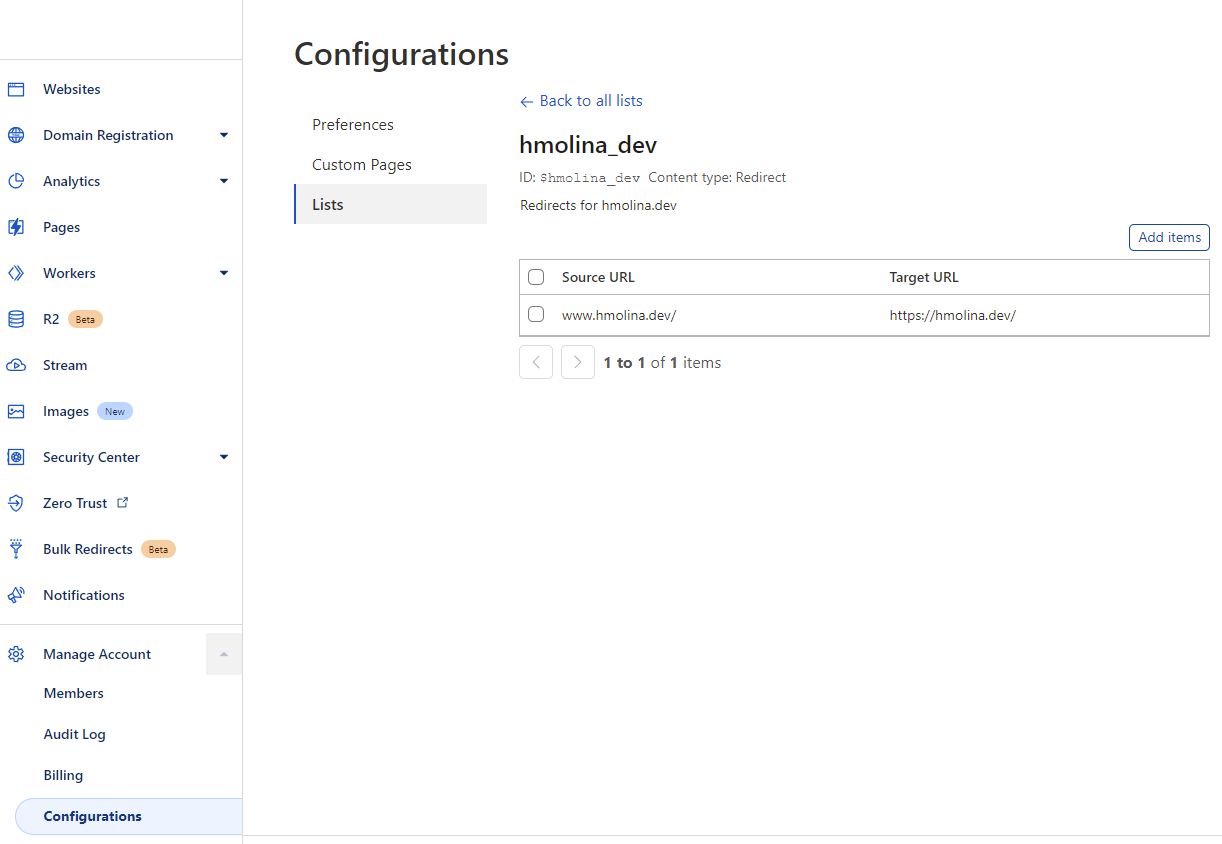
-
-
No analytics
-
Github offers nothing in terms of analytics for your published pages. CloudFlare Pages offers a “one click” integration with their free Web Analytics (Account Name -> Analytics -> Web Analytics -> Your website)
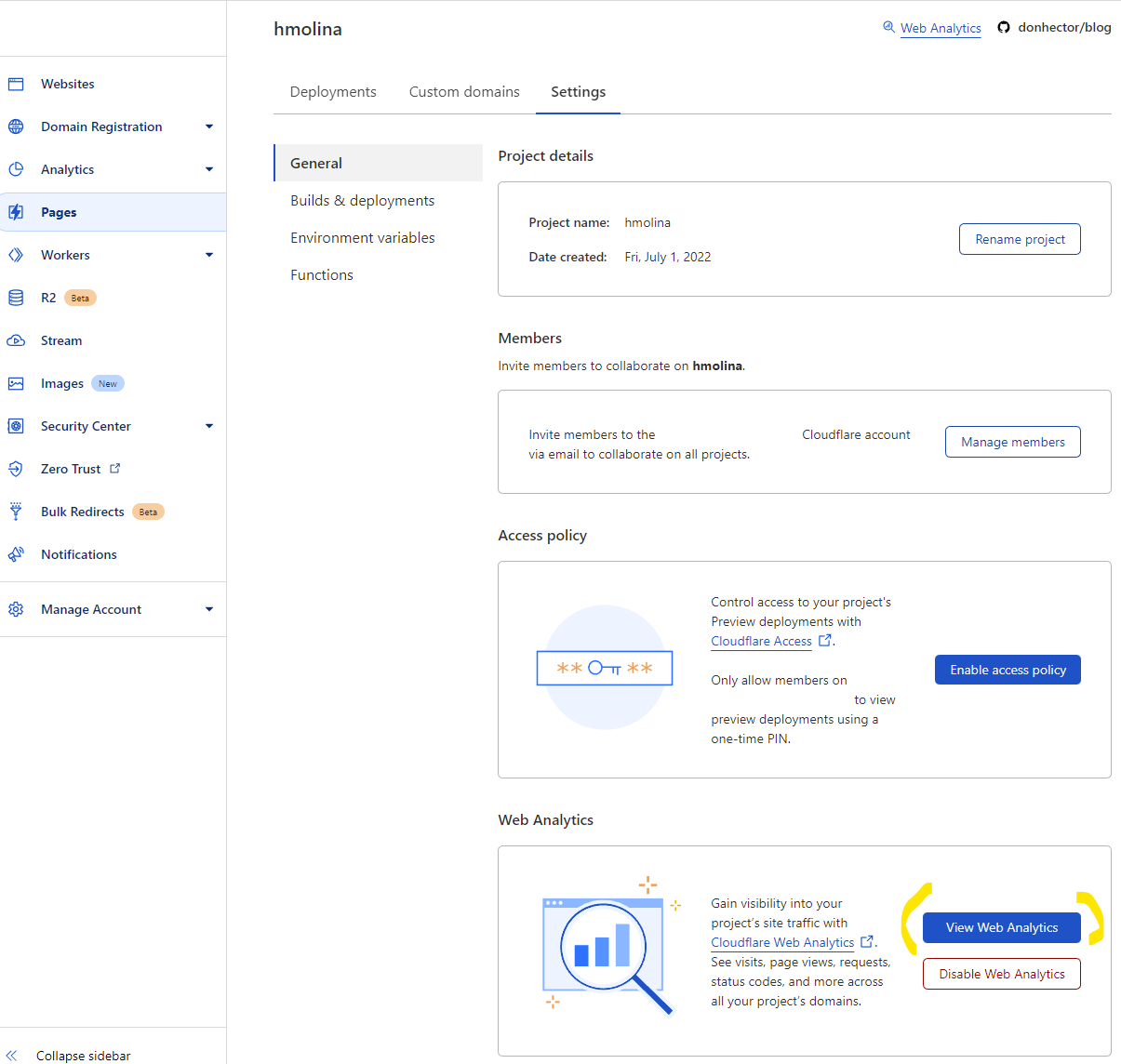

Not as nice multi-environment setup
-
It’s much easier to have different environments such as
staging,testing, etc, each mapped to its own branch, with each environment having its own custom dns pointing to it. By default CF Pages gives you a DNS record like<uniqueid>.<projectname>.pages.devfor every build. In addition, and this is the juicy part, it also gives you a DNS alias such<projectname>.pages.devfor what you decide is your production branch, and<branch>.<projectname>.pages.devfor any other branches in your repo. Then, using theCustom domainstab of your Pagesprojectnameyou can, with a couple clicks, assign a custom domain to your branch aliases (production or non-production):-
Production environment (
mainbranch of my repo):Custom domain -> CloudFlare created branch alias
example.com -> myproject.pages.dev
-
Staging environment (
stagingbranch of my repo):Custom domain -> CloudFlare created branch alias
staging.example.com -> staging.myproject.pages.dev
See documentation


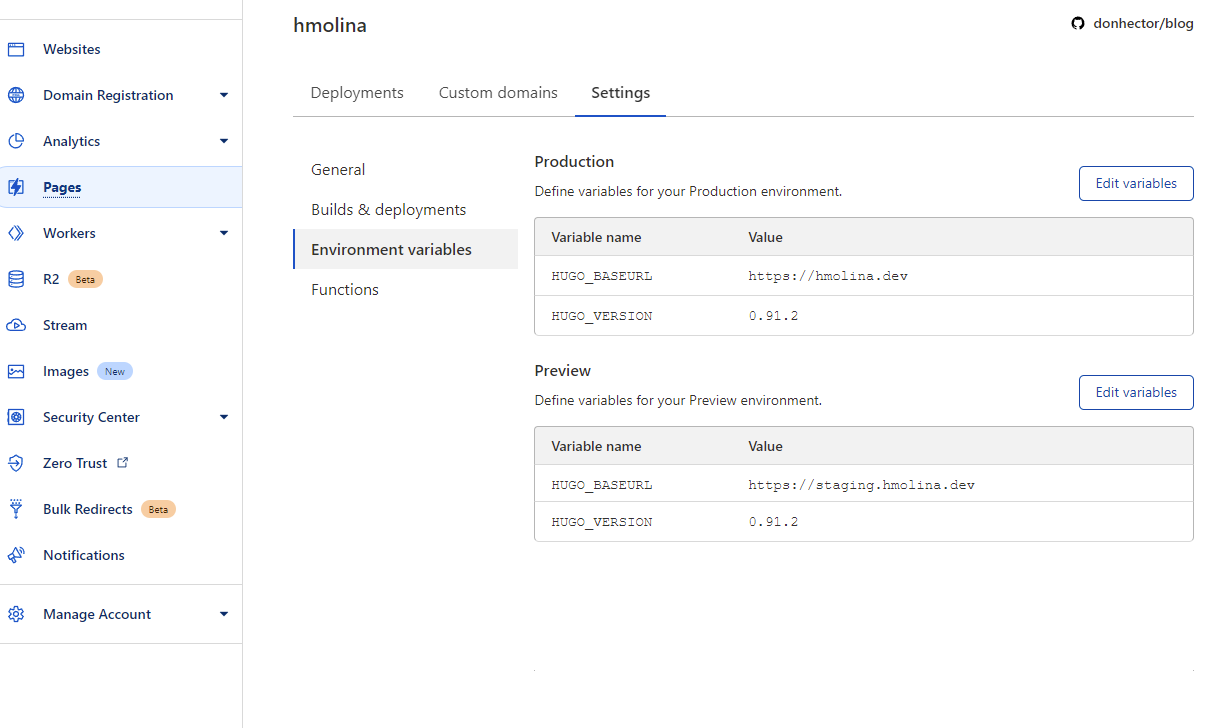
-
Not as nice build/deploy feedback
-
Github considers your Github Pages as the
github-pagesEnvironment, and it will show in the right hand side of your repo’s landing page whether the environment is Green or not. Additionally, since you’d be using a custom actions workflow like the one I posted earlier, it can report the workflow outcome as ‘status check’ on your pull requests. -
CloudFlare’s Pages does not create an Environment in Github, it instead reports feedback in the form of comments to your Pull Requests in Github. Additionally in the CloudFlare Pages website, it keeps a detailed history of all your deployments, their status and build logs.
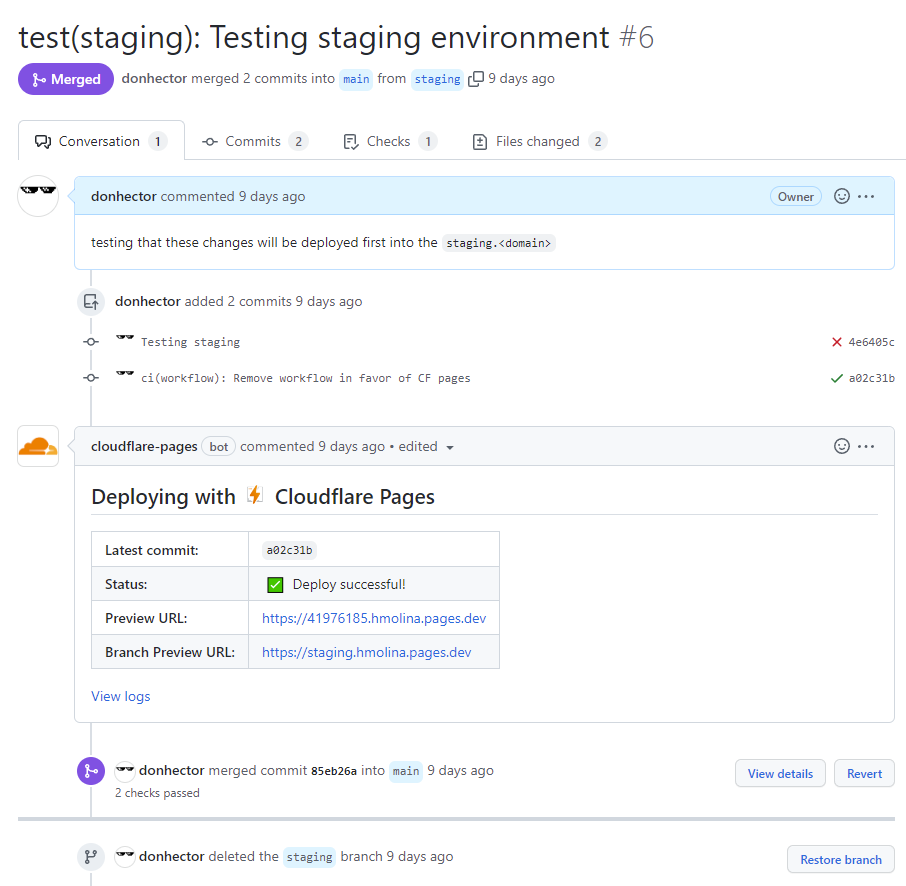
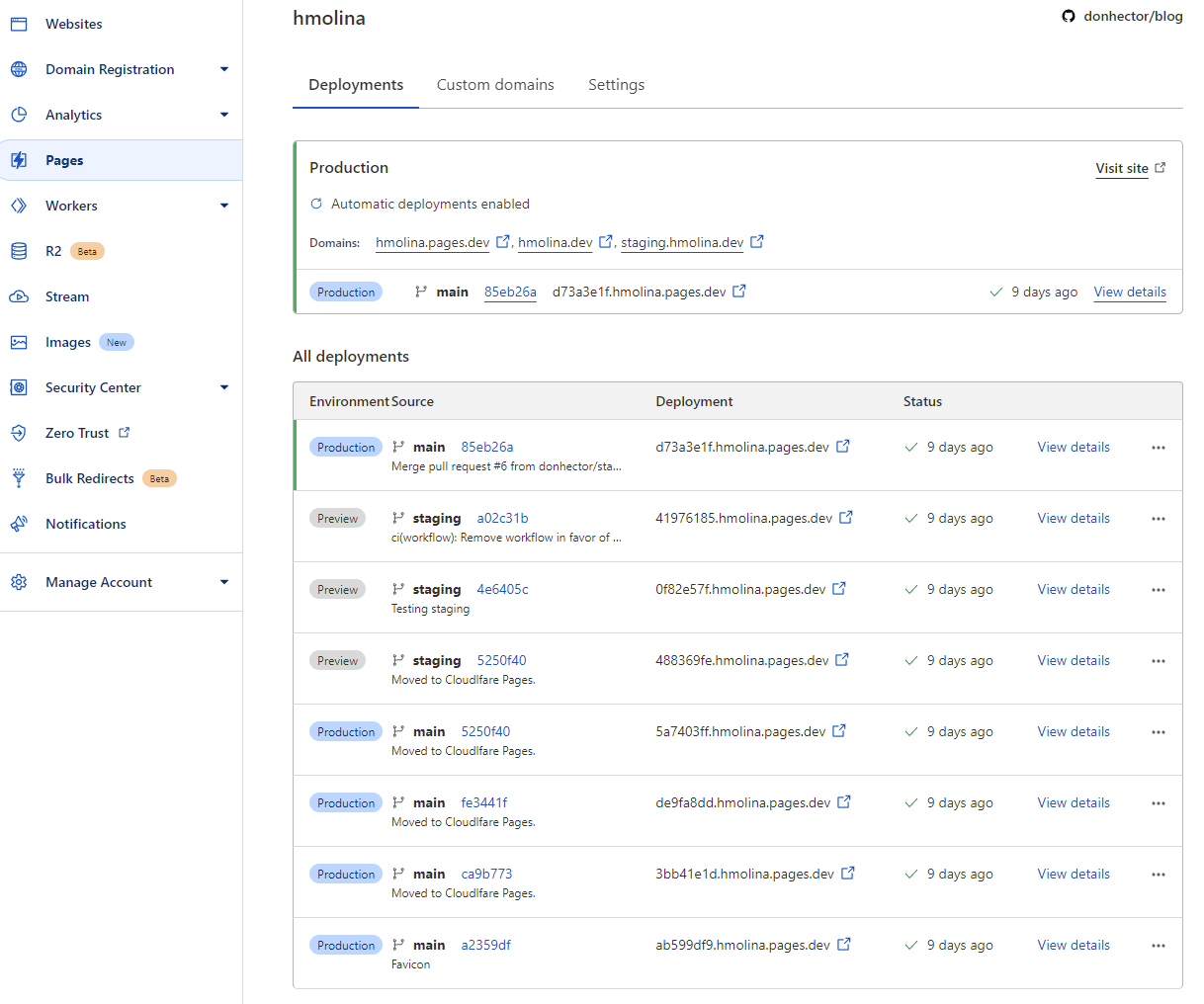

Closing
I was quite pleased with the CF Pages experience and features. CF Pages adapted easily to my Hugo project, whereas in GH Pages it was my project that needed to adapt.
Thanks to integrations with other CloudFlare services such as Web Analytics, DNS, and Bulk Redirects, you have a holistic way to manage your site.
All in all, I’m pretty happy with the move. In addition you get nice PR comments in Github when your site is built and deployed.
If you are new to CloudFlare give them a try. The amount of value you can get from CloudFlare’s free services is simply amazing, and you don’t even need a credit card to start using them. So zero billing surprises, not like in AWS.

